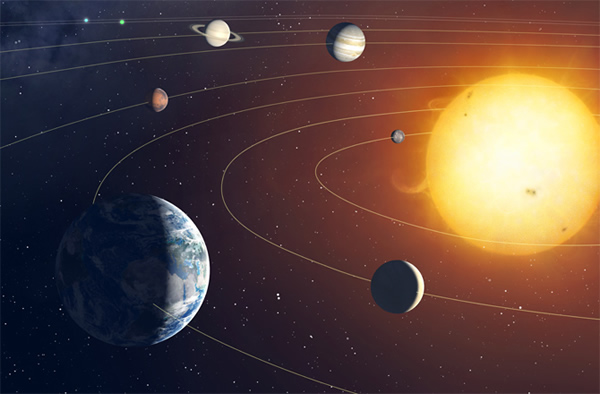Our Solar System: Rare Species in Cosmic Zoo
Pulling from 20 years of research since the first discoveries of planets beyond our solar system, scientists have concluded that Earth and its sibling worlds comprise what appears to be a relatively rare breed in a diverse cosmic zoo that includes a huge variety of planet sizes, orbits and parent stars.
The most common systems contain one or more planets one to three times bigger than Earth, all orbiting much closer to their parent stars than Earth circles the sun, says astronomer Andrew Howard, with the University of Hawaii.
Large planets the size of Jupiter are much less common than worlds between the size of Earth and Neptune, none of which even appear in our solar system.
The analysis is based on nearly 900 extrasolar planets found so far, plus a few thousand other candidate worlds still under investigation.
The list, which grows almost daily, includes planets of all sizes and orbits, including a handful located in so-called “habitable zones” where the temperatures on their surfaces would be suited for liquid water. Water -- or at least some kind of liquid -- is believed to be necessary for life.
Our solar system appears to be an oddball when compared with other star systems in our galaxy.
“It’s awesome that we have gone from nothing less than 20 years ago to being able to talk about planets in habitable zones and even have some planets that may be in habitable zones,” astrophysicist Sara Seager, with the Massachusetts Institute of Technology, told Discovery News.
In related research, Seager points out that with such a diverse collection of exoplanets found so far, scientists’ thinking about habitable zones may be too narrow.
“Because we’ve found so many different types of planets, we’re going to miss out on habitability if we don’t take a more broad view,” Seager said.
Ultimately, scientists want to search the atmosphere of Earth-like planets for telltale chemical signatures of oxygen and other signs of life.
“We don’t know exactly what to look for but our instruments are general and we can look for gases that don’t belong,” Seager said.
Potentially life-bearing worlds, however, may not necessarily have the same pressures and atmospheric compositions as Earth, and could be as far from a sun-like, parent star as Jupiter, for example.
The research appears in this week’s Science.(May 2, 2013 02:00 PM ET // by Irene Klotz)












